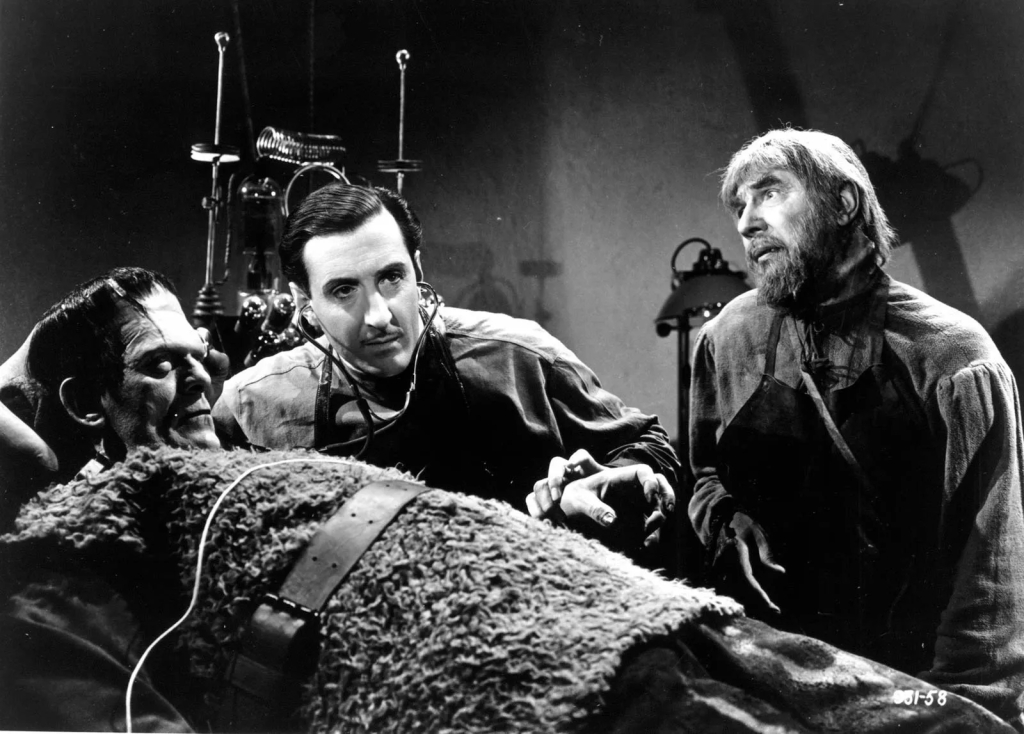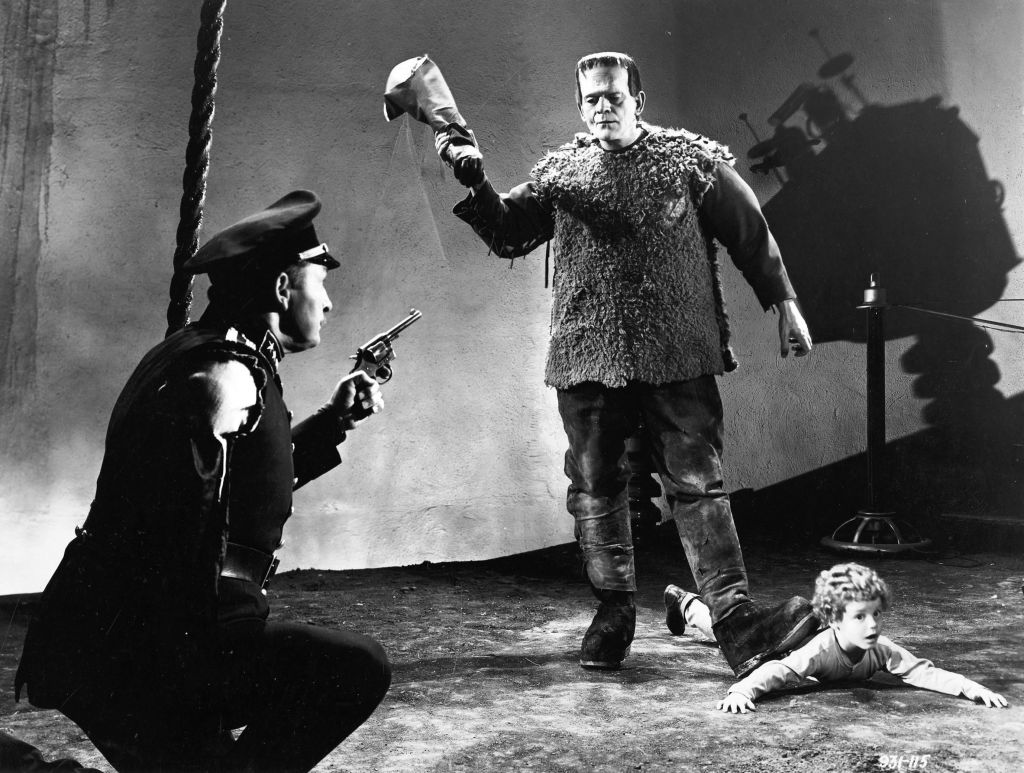I’ve set myself the challenge of watching all 28 films from Universal Studios’ golden age of horror that feature Count Dracula, Frankenstein’s Monster, the Mummy, the Invisible Man, the Wolf Man and the Creature from the Black Lagoon…
Spoiler warning: these reviews reveal minor plot points

This film starts with a boastful credit: ‘Universal presents BASIL RATHBONE, BORIS KARLOFF, BELA LUGOSI in…’ That’s quite a cast. Sherlock Holmes, Frankenstein’s monster and Count Dracula, all brought together. The Invisible Man‘s Claude Rains and Hungarian star Peter Lorre were also in the running for Rathbone’s part. But the studio bosses were right to promote the talent at their disposal. Their horror-movie sequence was now well established – and about to become something of an assembly line. Son of Frankenstein is the first of an astonishing *15* Universal Monsters films released within just six years.
Whereas the earlier Frankenstein movies had taken place in a nebulous, fin de siècle, mid-European hinterland, events have now moved on. We’re in the modern day, albeit one that never references the outside world, and Colin Clive’s Henry Frankenstein is long dead. As the story begins, Henry’s grown-up son Baron Wolf von Frankenstein (Rathbone) returns to the town named after his family. With the help of a local blacksmith called Ygor (Lugosi), who has a crooked neck from a failed hanging, Wolf realises he can rebuild the Frankensteins’ reputation by resurrecting his father’s famed Creature (Karloff) and proving the experiment was justified…

There’s some placeholder dialogue and this is the longest film in the series so far, so it’s not as punchy as we’ve been used to. But there’s fun in the details. For example, local police chief Inspector Krogh (Lionel Atwill) has a surreal tic: a fake arm, which he manipulates with the other to salute or hold his monocle. We learn that his real arm was torn off by the Creature when Krogh was a child, adding a backstory and a personal connection; the character and his disability were spoofed in 1974 comedy film Young Frankenstein. Director Roland V Lee also dips into the same expressionist toolbox that enthused James Whale earlier in the series, keeping things visually interesting with Brugelesque peasants, enormous and theatrical sets, artful shadows and rainy exteriors. (Lee considered shooting in colour but a test of the Creature make-up was not successful.) The film may lack Whale’s subversive wit but is nevertheless atmospheric and enjoyable.
Seven faiths, beliefs and unfoldments out of 10